 W
WThe Afghan National Army (ANA) is the land warfare branch of the Afghan Armed Forces. It is under the Ministry of Defense in Kabul and is largely trained by US-led NATO forces. The ANA is divided into seven corps, with the 201st in Kabul followed by the 203rd in Gardez, 205th in Kandahar, 207th in Herat, 209th in Mazar-i-Sharif, the 215th in Lashkar Gah, and the 217th in the north. The current Chief of General Staff of the ANA is Lieutenant General Yasin Zia.
 W
WThe Land Forces of the People's National Army are the land forces of the Algerian People's National Armed Forces. The Armée Nationale Populaire's equipment is supplied by Russia, and various other countries.
 W
WThe Armenian Army (Armenian: Հայկական բանակ, Haykakan Banak Armed Forces of Armenia and consists of the ground forces responsible for the country's land-based operations. It was established in conjunction with the other components of Armenia's military on January 28, 1992, several months after the republic declared its independence from the Soviet Union. The army's first head was the former deputy commander-in-chief of the main staff of the Soviet Ground Forces, Norat Ter-Grigoryants.
 W
WThe Texas Army, officially the Army of the Republic of Texas, was the land warfare branch of the Texas Military Forces during the Republic of Texas. It descended from the Texian Army, which was established in October 1835 to fight for independence from Centralist Republic of Mexico in the Texas Revolution. The Texas Army was provisionally formed by the Consultation in November 1835, however it did not replace the Texian Army until after the Battle of San Jacinto. The Texas Army, Texas Navy, and Texas Militia were officially established on September 5, 1836 in Article II of the Constitution of the Republic of Texas. The Texas Army and Texas Navy were merged with the United States Armed Forces on February 19, 1846 after the Republic of Texas became the 28th state of America.
 W
WThe army of the German state of Württemberg was until 1918 known in Germany as the Württembergische Armee.
 W
WRoyal Bahraini Army is the ground force component of the Bahrain Defence Force. The army's current strength is 15000 personnel and headed by Lieutenant General Khalifa bin Abdullah Al-Khalifa.
 W
WThe Belarusian Ground Forces is a service branch of the Armed Forces of Belarus. It is considered to be the seniormost and notable service branch in the armed forces. The current commander-in-chief of the ground forces is Major General Alexander Nikitin.
 W
WThe Royal Bhutan Army is a branch of the armed forces of the Kingdom of Bhutan responsible for maintaining the country's territorial integrity and sovereignty against security threats. The King of Bhutan is the Supreme Commander in Chief of the RBA. The Chief Operations Officer is Goonglon Gongma Batoo Tshering.
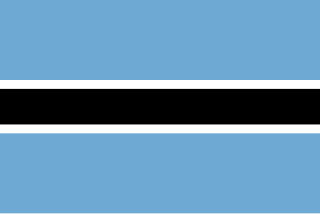 W
WThe Botswana Ground Forces is the army of the country of Botswana, and the land component of the Botswana Defence Force.
 W
WThe Brazilian Army is the land arm of the Brazilian Armed Forces. The Brazilian Army has fought in several international conflicts, mostly in South America during the 19th century. In the 20th century, it fought on the Allied side in World War I and World War II. Aligned with the Western Bloc, during the time of military dictatorship in Brazil from 1964 to 1985, it also had active participation in the Cold War, in Latin America and Southern Portuguese Africa, as well as taking part in UN peacekeeping missions worldwide since the late 1950s.
 W
WThe Royal Cambodian Army is a part of the Royal Cambodian Armed Forces. It has ground forces which numbered 85,000 divided into eleven divisions of infantry, with integrated armour and artillery support. The Royal Army is under the jurisdiction of the Ministry of National Defence.
 W
WThe Croatian Army and Croatian Ground Army is the largest and most significant component of the Croatian Armed Forces (CAF).
 W
WThe Czech Land Forces are the land warfare force of the Czech Republic. The Land Forces consisting of various types of arms and services complemented by air and special operations forces constitute the core of the Czech Armed Forces. Land Forces Command is located in Olomouc.
 W
WThe Army of the Dominican Republic or Ejército de República Dominicana, is one of the three branches of the Armed Forces of the Dominican Republic, together with the Navy and the Air Force.
 W
WArmy of the Duchy of Warsaw refers to the military forces of the Duchy of Warsaw. The Army was significantly based on the Polish Legions; it numbered about 30,000 and was expanded during wartime to almost 100,000. It was composed of infantry with a strong cavalry force supported by artillery. The Napoleonic customs and traditions resulted in some social tensions, but are generally credited with helpful modernization and useful reforms.
 W
WThe Ecuadorian Army is the land component of the Ecuadorian Armed Forces. Its 116,450 soldiers are deployed in relation to its military doctrine. The contemporary Ecuadorian Army incorporates many jungle and special forces infantry units into its structure.
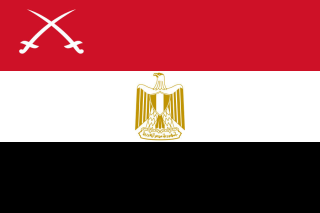 W
WThe Egyptian Army or Egyptian Ground Forces is the largest service branch within the Egyptian Armed Forces. The modern army was established during the reign of Muhammad Ali Pasha (1805–1849), widely considered to be the "founder of modern Egypt". Its most significant engagements in the 20th century were in Egypt's five wars with the State of Israel, one of which, the Suez Crisis of 1956, also saw it do combat with the armies of Britain, and France. The Egyptian army was also engaged heavily in the protracted North Yemen Civil War, and the brief Libyan-Egyptian War in July 1977. Its last major engagement was Operation Desert Storm, the liberation of Kuwait from Iraqi occupation in 1991, in which the Egyptian army constituted the second-largest contingent of the allied forces.
 W
WThe New Model Army of England was formed in 1645 by the Parliamentarians in the English Civil War, and was disbanded in 1660 after the Restoration. It differed from other armies in the series of civil wars referred to as the Wars of the Three Kingdoms in that it was intended as an army liable for service anywhere in the country, rather than being tied to a single area or garrison. Its soldiers became full-time professionals, rather than part-time militia. To establish a professional officer corps, the army's leaders were prohibited from having seats in either the House of Lords or House of Commons. This was to encourage their separation from the political or religious factions among the Parliamentarians.
The Republic of Fiji Military Forces (RFMF) is the military force of the Pacific island nation of Fiji. With a total manpower of 3,500 active soldiers and 6,000 reservists, it is one of the smallest militaries in the world, though most of its surrounding island nations have no militaries at all. The Ground Force is organised into six infantry and one engineer battalions, with approximately 6,000 reserves. There was formerly one "Zulu" company of counter-revolutionary specialists, which was deactivated in late 2000 due to a mutiny by some of its members.
 W
WThe People’s Revolutionary Army (PRA) was the military of Grenada between 1979 and 1983.
 W
WThe Black Army, also called the Black Legion/Regiment – possibly after their black armor panoply – is a common name given to the military forces serving under the reign of King Matthias Corvinus of Hungary. The ancestor and core of this early standing mercenary army appeared in the era of his father John Hunyadi in the early 1440s. The idea of the professional standing mercenary army came from Matthias' juvenile readings about the life of Julius Caesar.
 W
WThe Irish Army, known simply as the Army, is the land component of the Defence Forces of Ireland. Approximately 7,300 men and women served in the Irish Army on a permanent basis as of May 2016, and there were 1,600 active reservists, divided into two geographically organised brigades. As well as maintaining its primary roles of defending the State and internal security within the State, since 1958 the Army has had a continuous presence in peacekeeping missions around the world. The Army also participates in the European Union Battlegroups. The Air Corps and Naval Service support the Army in carrying out its roles.
 W
WThe Kazakh Ground Forces is the army service branch of the Armed Forces of the Republic of Kazakhstan.
 W
WThe Korean People's Army Ground Force(KPAGF; Korean: 조선인민군 륙군; Hanja: 朝鮮人民軍 陸軍; lit. Korean People's Military Land Group) is the main branch of the Korean People's Army, responsible for land-based military operations.
 W
WThe Libyan Army was the branch of the Armed Forces of the Libyan Arab Jamahiriya, the Libyan Arab Republic and the Libyan Kingdom responsible for ground warfare.
 W
WThe Malayan People's Anti-Japanese Army was a paramilitary group that was active during the Japanese occupation of Malaya from 1942 to 1945. Composed mainly of ethnic Chinese guerrilla fighters, the MPAJA was the biggest anti-Japanese resistance group in Malaya. Founded on 18 December 1941 during the Japanese invasion of Malaya, the MPAJA was conceived as a part of a combined effort by the Malayan Communist Party (MCP), British colonial government, and various anti-Japanese groups to resist the Japanese occupation of Malayan territory. Although the MPAJA and the MCP were officially different organisations, many saw the MPAJA as a de facto armed wing of the MCP due to its leadership being staffed by mostly ethnic Chinese communists. Many of the ex-guerrillas of the MPAJA would later join the MCP in its open conflict with the BMA during the Malayan Emergency.
 W
WThe Mexican Army is the combined land and air branch and is the largest of the Mexican Armed Forces; it is also known as the National Defense Army.
 W
WMoldavia had a military force for much of its history as an independent and, later, autonomous principality subject to the Ottoman Empire.
 W
WThe Mongolian People's Army or Mongolian People's Revolutionary Army was an institution of the Mongolian People's Revolutionary Party constituting as the armed forces of the Mongolian People's Republic.
 W
WThe Myanmar Army is the largest branch of the Armed Forces (Tatmadaw) of Myanmar (Burma) and has the primary responsibility of conducting land-based military operations. The Myanmar Army maintains the second largest active force in Southeast Asia after the People's Army of Vietnam.
 W
WThe Namibian Army is the landward defence branch of the Namibian Defence Force.
 W
WThe National People's Army was the armed forces of the German Democratic Republic (GDR) from 1956 to 1990.
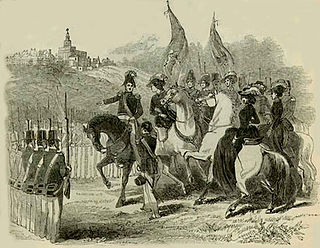 W
WThe Nauvoo Legion was a state-authorized militia of the city of Nauvoo, Illinois, United States. With growing antagonism from surrounding settlements it came to have as its main function the defense of Nauvoo, and surrounding Latter Day Saint areas of settlement.
 W
WThe Nepali Army, formerly Gurkha Army and the Royal Nepalese Army (RNA), is the military land warfare force of Nepal that originated from Gorkha Kingdom. The army was formerly known as the "Gurkha Army" during the unification of Nepal and later as "The Royal Nepalese Army (RNA)" during the monarchy period in Nepal. It was renamed the Nepalese Army on 28 May 2008 after the abolition of the 240-year-old Shah dynasty.
 W
WThe Sandinista Popular Army was the military established in 1979 by the new Sandinista government to replace the National Guard, following the overthow of Anastasio Somoza Debayle. In post-Sandinista Nicaragua, it has been remolded into the National Army of Nicaragua. Joaquín Cuadra was chief of staff, serving Defense Minister Humberto Ortega. A draft, called the Patriotic Military Service, (SMP) was instituted in 1983. It later became Obligatory Military Service (SMO). The special forces Tropas Pablo Ubeda initially came under the Ministry of Interior and then the BLI'S were Created.
 W
WThe Security Forces Command is the military and security force of the Turkish Republic of Northern Cyprus.
 W
WThe Royal Army of Oman is the ground forces component of the Sultan of Oman's Armed Forces. It was founded in 1907 as the Muscat Garrison. It has a current strength of 125,000 personnel.
 W
WThe Paraguayan Army is an institution of the State of Paraguay, organized into three divisions and 9, and several commands and direction. It has gone to war on three occasions: in the War of the Triple Alliance (1864–1870) against Brazil, Argentina and Uruguay; the Chaco War against Bolivia; and the ongoing Paraguayan People's Army insurgency.
 W
WThe Royal Prussian Army served as the army of the Kingdom of Prussia. It became vital to the development of Brandenburg-Prussia as a European power.
 W
WThe Rhodesian Security Forces were the military forces of the Rhodesian government. The Rhodesian Security Forces consisted of a ground force, the Rhodesian Air Force, the British South Africa Police (BSAP), and various personnel affiliated to the Rhodesian Ministry of Internal Affairs (INTAF). Despite the impact of economic and diplomatic sanctions, Rhodesia was able to develop and maintain a potent and professional military capability.
 W
WThe Salvadoran Army is the land branch and largest of the Armed Forces of El Salvador.
 W
WThe Saudi Arabian Army or officially Royal Saudi Land Forces is a land warfare service branch of the Armed Forces of Saudi Arabia. It is part of the Ministry of Defense, which is one of the two military departments of the Government of Saudi Arabia, together with the Ministry of National Guard. According to the IISS in 2018, the RSLF has approximately 251,500 active duty personnel.
 W
WThe Scots Army, was the army of the Kingdom of Scotland between the Restoration in 1660 and the Acts of Union of 1707. A small standing army was established at the Restoration, which was mainly engaged in opposing Covenanter rebellions and guerrilla warfare pursued by the Cameronians in the East. There were also attempts to found a larger militia. By the Glorious Revolution in 1688–89 the standing army was over 3,500 men. Several new regiments were raised to defend the new regime and, although some were soon disbanded several took part in William II's continental wars. By the time of the Act of Union in 1707, the army had seven units of infantry, two of horse and one troop of Horse Guards. Early units wore grey, but adopted red like the English army after 1684. In 1707 the existing regiments were incorporated into the British Army and new Scottish and particularly Highland regiments would be raised from the 1740s, some of which had a long history within the army.
 W
WThe South West Africa Territorial Force (SWATF) was an auxiliary arm of the South African Defence Force (SADF) and comprised the armed forces of South West Africa from 1977 to 1989. It emerged as a product of South Africa's political control of the territory which was granted to the former as a League of Nations mandate following World War I.
 W
WThe Syrian Army, officially the Syrian Arab Army (SAA), is the land force branch of the Syrian Armed Forces. It is the dominant military service of the four uniformed services, controlling the most senior posts in the armed forces, and has the greatest manpower, approximately 80 percent of the combined services. The Syrian Army originated in local military forces formed by the French after World War I, after France obtained a mandate over the region. It officially came into being in 1945, before Syria obtained full independence the following year.
 W
WThe Texian Army, also known as the Revolutionary Army and Army of the People, was the land warfare branch of the Texian armed forces during the Texas Revolution. It spontaneously formed from the Texian Militia in October 1835 following the Battle of Gonzales. Along with the Texian Navy, it helped the Republic of Texas win independence from the Centralist Republic of Mexico on May 14, 1836 at the Treaties of Velasco. Although the Texas Army was officially established by the Consultation of the Republic of Texas on November 13, 1835, it did not replace the Texian Army until after the Battle of San Jacinto.
 W
WThe Tibetan Army was the military force of Tibet after its de facto independence in 1912 until the 1950s. As a ground army modernised with the assistance of British training and equipment, it served as the de facto armed forces of the Tibetan government.
 W
WThe Tunisian Land Army is the ground component of the Armée nationale tunisienne. The Land Forces Command is located in Bizerte. The TAF itself was created on June 30, 1956.
 W
WThe Tuvan People's Revolutionary Army (TNRA) was the military wing of the Tuvan People's Revolutionary Party which constituted as the armed forces of the Tuvan People's Republic.
 W
WThe Ukrainian Ground Forces are the land force component of the Armed Forces of Ukraine. They were formed from Soviet Ground Forces formations, units, and establishments, including three military districts, that were on Ukrainian soil when the Soviet Union collapsed.
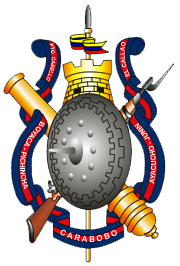 W
WThe Venezuelan Army, officially the National Army of the Bolivarian Republic of Venezuela, is one of the six professional branches of the Armed Forces of Venezuela. It has the responsibility for land-based operations against external, or internal threats that may put the sovereignty of the nation at risk.
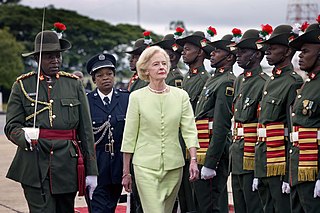 W
WThe Zambia Army, with Lieutenant General William Sikazwe as Commander, is part of the Zambian Defence Force. Like all branches of the Zambian military, citizens of the nation are required to register at 16, and citizens can join at 16 with parental consent or at 18 when they are classified as adults by Zambia. There is currently no conscription. Applicants must be Zambian citizens and must have a school Grade 12 certification. Applicants must also undergo a test for HIV on enlistment. Personnel can serve until age 65, when there is a mandatory retirement. Its first Major General was Michael Grigg, appointed by Kenneth Kaunda. The first local Commander was Gen Kingsley Chinkuli. According to the 2014 CIA World Factbook:There are 3,041,069 men between 16-49 who are classified as manpower, and 2,948,291 women between 16–49 who are classified as manpower. This makes a total of 5,989,360 people classified as manpower. There are 1,745,656 men who are classified as fit for military service between the ages of 16–49. There are 1,688,670 women who are classified as fit for military service between the ages of 16–49. Therefore, Zambia has 3,434,326 people fit for military service between the ages of 16–49. 1.55% of the GDP of Zambia is spent on the military. Ranked 70 in the world.
 W
WThe Zimbabwe National Army (ZNA) is the primary branch of the Zimbabwe Defence Forces responsible for land-oriented military operations. It is the largest service branch under the Zimbabwean Joint Operations Command (JOC). The modern army has its roots in the Rhodesian Army, which was raised between 1963 and 1964 after the breakup of the Federation of Rhodesia and Nyasaland. A Joint High Command created in March 1980 to oversee integration of the formerly belligerent Rhodesian Security Forces, Zimbabwe African National Liberation Army (ZANLA), and the Zimbabwe People's Revolutionary Army (ZIPRA) officially established the Zimbabwe National Army in late 1980, nearly a year after the end of the Rhodesian Bush War.